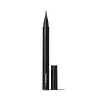What's inside
What's inside
 Key Ingredients
Key Ingredients

 Benefits
Benefits

 Concerns
Concerns

 Ingredients Side-by-side
Ingredients Side-by-side

Water
Skin ConditioningButylene Glycol
HumectantAlcohol
AntimicrobialAmmonium Acrylates Copolymer
Acrylates Copolymer
1,2-Hexanediol
Skin ConditioningTocopherol
AntioxidantEthylhexylglycerin
Skin ConditioningSucrose Palmitate
EmollientSimethicone
EmollientSorbitan Laurate
EmulsifyingSorbitan Palmitate
EmulsifyingSorbitan Trioleate
EmulsifyingHydrogenated Palm Glycerides
EmollientAminomethyl Propanol
BufferingBeheneth-30
CleansingPhenoxyethanol
PreservativeMica
Cosmetic ColorantCI 77891
Cosmetic ColorantCI 77491
Cosmetic ColorantCI 77492
Cosmetic ColorantCI 77499
Cosmetic ColorantCI 77266
CI 42090
Cosmetic ColorantCI 75470
Cosmetic ColorantCI 77289
Cosmetic ColorantCI 77288
Cosmetic ColorantCI 77510
Cosmetic ColorantCI 77007
Cosmetic ColorantCI 19140
Cosmetic ColorantWater, Butylene Glycol, Alcohol, Ammonium Acrylates Copolymer, Acrylates Copolymer, 1,2-Hexanediol, Tocopherol, Ethylhexylglycerin, Sucrose Palmitate, Simethicone, Sorbitan Laurate, Sorbitan Palmitate, Sorbitan Trioleate, Hydrogenated Palm Glycerides, Aminomethyl Propanol, Beheneth-30, Phenoxyethanol, Mica, CI 77891, CI 77491, CI 77492, CI 77499, CI 77266, CI 42090, CI 75470, CI 77289, CI 77288, CI 77510, CI 77007, CI 19140
Hydrogenated Coco-Glycerides
EmollientTriethylhexanoin
MaskingRicinus Communis Seed Oil
MaskingDipentaerythrityl Hexahydroxystearate/Hexastearate/Hexarosinate
Skin ConditioningCopernicia Cerifera Wax
Polymethyl Methacrylate
Ozokerite
Emulsion StabilisingTocopherol
AntioxidantAscorbyl Palmitate
AntioxidantLecithin
EmollientCitric Acid
BufferingMica
Cosmetic ColorantCI 77891
Cosmetic ColorantIron Oxides
CI 77000
Cosmetic ColorantCI 42090
Cosmetic ColorantCI 77163
Cosmetic ColorantCI 75470
Cosmetic ColorantCI 77289
Cosmetic ColorantCI 77288
Cosmetic ColorantCI 77510
Cosmetic ColorantCI 77742
Cosmetic ColorantCI 77007
Cosmetic ColorantCI 19140
Cosmetic ColorantHydrogenated Coco-Glycerides, Triethylhexanoin, Ricinus Communis Seed Oil, Dipentaerythrityl Hexahydroxystearate/Hexastearate/Hexarosinate, Copernicia Cerifera Wax, Polymethyl Methacrylate, Ozokerite, Tocopherol, Ascorbyl Palmitate, Lecithin, Citric Acid, Mica, CI 77891, Iron Oxides, CI 77000, CI 42090, CI 77163, CI 75470, CI 77289, CI 77288, CI 77510, CI 77742, CI 77007, CI 19140
Ingredients Explained
These ingredients are found in both products.
Ingredients higher up in an ingredient list are typically present in a larger amount.
CI 19140 is also known as Tartrazine. Tartrazine is a synthetic dye used in cosmetics, foods, and medicine to add a yellow color.
Tartrazine is created from petroleum and is water-soluble.
Some people may experience allergies from this dye, especially asthmatics and those with an aspirin intolerance.
Learn more about CI 19140Ci 42090 is a synthetic dye created from petroleum. It is used to give a bright blue color to cosmetics, medicine, and food.
Ci 75470 is a bright-red pigment. It is AKA carmine.
Carmine is derived from insects such as the cochineal beetle. This ingredient has been used as a natural dye for over 2000 years.
This pigment is called Ultramarine blue lazurite. It gives a saturated blue color, but can be used to create other colors as well.
According to the manufacturer, it is usually made from kaolin, sodium sulfate, sodium carbonate, sulfur, and charcoal.
Ci 77288 is used to add green pigment to products.
We don't have a description for CI 77289 yet.
This ingredient is used to impart a blue color. It is not water-soluble.
It goes by two different names:
1. Ferric Ferrocyanide: a synthetic dark blue pigment
2. Ferric Ammonium Ferrocyanide: a synthetic blue pigment, also called Prussian blue
In the EU, both of these colors must be labeled as 'CI 77510'.
Learn more about CI 77510Ci 77891 is a white pigment from Titanium dioxide. It is naturally found in minerals such as rutile and ilmenite.
It's main function is to add a white color to cosmetics. It can also be mixed with other colors to create different shades.
Ci 77891 is commonly found in sunscreens due to its ability to block UV rays.
Learn more about CI 77891Mica is a naturally occurring mineral used to add shimmer and color in cosmetics. It can also help improve the texture of a product or give it an opaque, white/silver color.
Serecite is the name for very fine but ragged grains of mica.
This ingredient is often coated with metal oxides like titanium dioxide. Trace amounts of heavy metals may be found in mica, but these metals are not harmful in our personal products.
Mica has been used since prehistoric times throughout the world. Ancient Egyptian, Indian, Greek, Roman, Aztec, and Chinese civilizations have used mica.
Learn more about MicaTocopherol (also known as Vitamin E) is a common antioxidant used to help protect the skin from free-radicals and strengthen the skin barrier. It's also fat soluble - this means our skin is great at absorbing it.
Vitamin E also helps keep your natural skin lipids healthy. Your lipid skin barrier naturally consists of lipids, ceramides, and fatty acids. Vitamin E offers extra protection for your skin’s lipid barrier, keeping your skin healthy and nourished.
Another benefit is a bit of UV protection. Vitamin E helps reduce the damage caused by UVB rays. (It should not replace your sunscreen). Combining it with Vitamin C can decrease sunburned cells and hyperpigmentation after UV exposure.
You might have noticed Vitamin E + C often paired together. This is because it is great at stabilizing Vitamin C. Using the two together helps increase the effectiveness of both ingredients.
There are often claims that Vitamin E can reduce/prevent scarring, but these claims haven't been confirmed by scientific research.
Learn more about Tocopherol